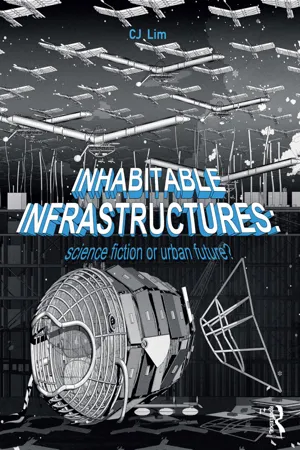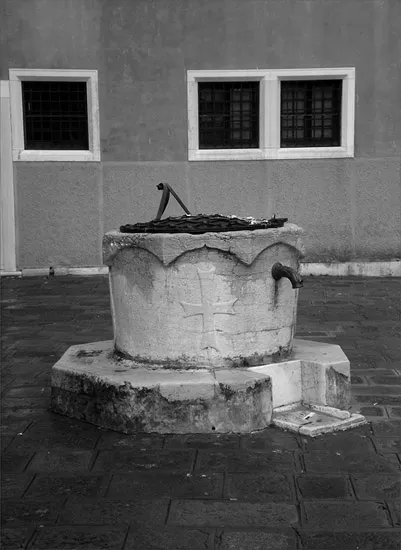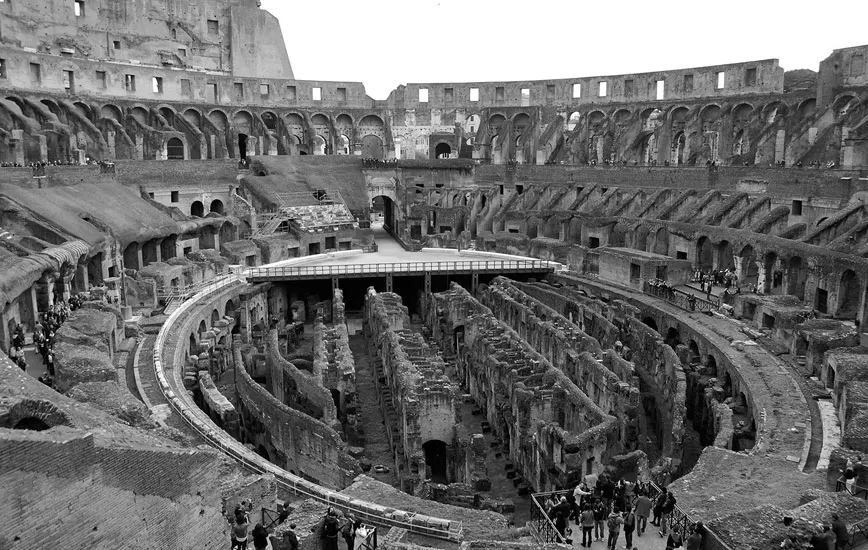![]()
To Provide
The aqueduct of Segovia in Spain, one of many hard infrastructures that empowered Rome and its ascension to become the great city of popular imagination.
‘There can be no doubt that engineering came into being to solve new problems of a new society, but once engineering was established, there arose an interaction by which it in turn influenced the evolution of society. This state of affairs continues today and will continue to exist as long as civilization remains dynamic and maintains its evolutionary course.’
– Richard Shelton Kirby, ‘Engineering in History’, 1991
The evolution of society and the city as a continual problem solving activity is a Roman idea. The Romans were great engineers and they brought ingenious utilitarian infrastructure to provide for the regions of their empire. They created long lasting urban and environmental impacts, and their technologies were the reconciliation of external expansion and essential consolidation. Sextus Julius Frontinus, the most famous of Roman engineers and a utilitarian public servant with no interest in aesthetics, famously stated: ‘With such an array of indispensable structures, compare if you will, the idle Pyramids or the useless, though famous works of the Greek.’1
Amongst the innovations of the Augustan age, it was the aqueduct – a hard infrastructure to channel water – that empowered Rome and its ascension to become the great city of popular imagination. Water management has been a key factor in its prosperity, wellbeing and cultivation from a humble pastoral settlement. Without the aqueduct, other cities of the Roman Empire including Colonia Nemausus ‘Nimes’ in France, Colonia Claudia Ara Agrippinensium ‘Cologne’ in Germany, Tarraco ‘Tarragona’ in Spain and the city of Gadara, in modern day Jordan, would probably not have existed.
From the 1st to the 2nd century, aqueducts multiplied throughout Rome and traversed the cities of its empire; colonnades of arches reached prodigious heights conducting water streams. Not altogether new, the arch had been used by the Etruscans, and the inspiration of the water management system was adopted from the Greeks, which originated from the ‘ganats’ in Persia. The qanat system consists of underground channels that convey water from aquifers in highlands to the surface at lower levels by gravity, and they are still built today throughout Africa and the Middle East.
Any lack of originality of the Romans, however, was adequately compensated for by the assimilation of unparalleled strategic thinking and a willingness to adopt new and foreign ideas, in the process achieving a distinctive expression of its own.2 The aqueduct of Segovia in Spain is over 800 meters long and the Pont du Gard in southern France is 270 meters in length; both still survive today as spectacular monuments to the skill and audacity of Roman engineers. The former has a double row of five-meter
There was once a network of over 6,000 wells located in the middle of squares and courtyards, to supply the population of Venice with freshwater.
arches, one above the other and at the high point reaching 36 meters. The Pont du Gard, with its three tiers of arches, measures 49 meters in height and is a spectacular vision.3
Despite common belief, viaducts and bridges supported only 5% of the total distance of Rome’s aqueducts. The majority of Roman water infrastructure ran below the city for security reasons – an exposed drinking water supply would be vulnerable to the many enemies of the empire.4 The entire system relied on various gradients and gravity to maintain a continuous flow. Water arrived in varying qualities and was stored in giant underground cisterns located around the city. The worst water, which came from lakes, served farms for irrigation, while the best quality water sourced from underground springs and from the valley was delivered to private houses, public fountains, and bathhouses, where the inhabitants of ancient Rome spent much of their leisure time. The collection of grey-water within the infrastructure was carefully designed so that all wastewater drained into the Cloaca Maxima, which eventually emptied directly into the Tiber River. The constant flow of water helped to remove wastes from latrines and keep the sewers clear of obstructions. The Cloaca Maxima is one of the world’s oldest functioning wastewater and storm-water systems today.
In most circumstances, the water from the aqueducts reached only the ground floor of apartment buildings. Ancient Rome was a city of fountains; the inhabitants of the upper floors had to manually carry water drawn from the nearest public fountain. The city’s aqueducts fed 39 monumental fountains and 591 public basins.5 These social infrastructures were an invitation ‘for pausing, an opportunity to quit for the moment, the activity of the pavement joining directly with those of contiguous streets and squares, and ready to receive diversions from traffic alongside, spatially dilated through the sight and sound of moving water’.6 At the height of the Roman Empire, 11 aqueducts supplied the city of Rome a per capita water use of 67 liters per day that is more than what is commonly available in most cities today.7 Cities and municipalities throughout the empire commissioned aqueducts as public necessities of aspiring luxury and civic pride.
Water management became an issue for the city. Not all the water carried in the aqueduct arrived in Rome – a large number of landowners and farmers bribed water officials to tap a nearby aqueduct. Upon his investigation of the problem of illegal connections, Frontinus was exasperated, ‘there are extensive areas in various places where secret pipes run under the pavement all over the city. I discovered that these pipes were furnishing water by special branches to all those engaged in business in those localities through which the pipes ran, being bored for the purpose here and there by the so-called “puncturers”. How large an amount of water has been stolen in his manner, I estimate by means of the fact that a considerable quantity of lead has been brought in by the removal of that kind of branch pipe.’8
The Claudians over time adjusted the ideal of engineering towards the provision of infrastructure as a public duty. With political and social stability, a new phase of urbanism for the empire coincided with the introduction of new everyday soft infrastructures. Bathhouses and latrines provided basic human rights to clean water and sanitation, and these sumptuous and elaborate establishments acted as community centers and analog of urban life. By the end of the 4th century, Rome had 11 huge, symmetrically planned
Historians believe the Colosseum in Rome could even been flooded to host naumachia / navalia proelia (mock sea-battles).
imperial baths and more than 800 further domestic establishments.9 The amphitheater delivered sports and gladiatorial recreation. The forum, a novel Roman idea, was a marketplace; along with shops and the stoas used for open stalls, it incorporated the city hall, the magistrate court, and a temple that were all combined into a single structure. The multiuse infrastructure facilitated open, diverse discussions and people were able to publicly voice their political opinions and socialize. Forum Trajanum was the last of the imperial infrastructure of ancient Rome.
However, the provisions of everyday infrastructures must not be misconstrued with the development of social wellbeing and liberalism. The bathhouses, amphitheater and forum were representative of political and social control centers, giving Rome further surveillance and influence over its people and its new colonies. The greatness of the Roman Empire was a direct consequence of engineering as propaganda, and the aqueduct was the ultimate ingenious political infrastructure. It is indeed because of the aqueduct that great transformations of service infrastructure took place, changing the basic systems from a primitive mode into recognizable modern forms.
Specialized Ground
Roman society was immensely attached to its public fountains, bathhouses and forum. It is recognized that humans form emotional attachments to cities and infrastructures – the San Franciscans fought the City Hall, pro-bus politicians and the Public Utilities Commission for over seven years in the 40s to save the cable cars. San Francisco’s Powell Street cable car system is a significant ground treatment transport infrastructure. Based on early mining conveyance systems, Andrew Smith Hallidie’s system came about in 1873 after he witnessed horses being whipped while they struggled on the wet cobblestones to pull a horse-car up many of the city’s steep hills.10 Each car was towed along its hilly tracks and had a grip mechanism that engaged with a system of cables operating at constant speed in channels beneath the streets. The operating machinery was located at the powerhouse, where large boilers were used to drive the winding wheels. At each of the terminals, manual non-powered turntables were employed to rotate the single-ended cable cars, adding theatre to the transport system.
After the great earthquake and fire of San Francisco in 1906, the cable car infrastructure along with the rest of the city was left in ruins. The infrastructure of 69 city blocks’ worth of tracks and cable channels was upgraded and rebuilt several times. Today the city’s intermodal urban transport network is celebrated as the world’s last remaining manually operated cable car system – an icon for the city, a commuter transport and a tourist attraction. As old as almost any building in the city and a great way to climb up San Francisco’s notoriously undulating streets, the cable car infrastructure (and the ringing of their bells!) is an intrinsic piece of urban legacy, specialized, localized and integrated.11
There are threats for the long-standing tradition in the ever-denser city. According to the US Department of Transportation, the cable cars routinely rank among the most accident-prone mass transportation mode in the country per vehicle mile traveled annually. Over the last 10 years, city officials have reported 126 accidents injuring 151 people.12 This is due to the motor-car oriented culture, and traffic pressures that are caused when streets designed for specialist systems are pushed to breaking point with generic transport, neither being truly suitable for the 21 century city.
Walking on Air
With increasing population density, limited usable land and challenging topography, cities are looking towards elevated walkways and skywalks to improve pedestrian accessibility and provide better walking environments. These enclosed environments invoke memories of SF – HG Wells’ ‘A Story of the Days To Come’ (1897) and ‘The Sleeper Awakes’ (1910), and Fritz Lang’s ‘Metropolis’ (1925). However, the moving walkways and skywalks in all three dystopian SF are no match when compared to Robert A Heinlein’s 350-kilometer mechanical connection between Cincinnati and Cleveland described in ‘The Roads Must Roll’ (1940).
The Hong Kong Central Elevated Walkway System provides an extensive three-dimensional connectivity where the traditional ‘terra firma’ reference is rendered obsolete. Its elaborate aerial network of walkways, footbridges and elevated tunnels link...



